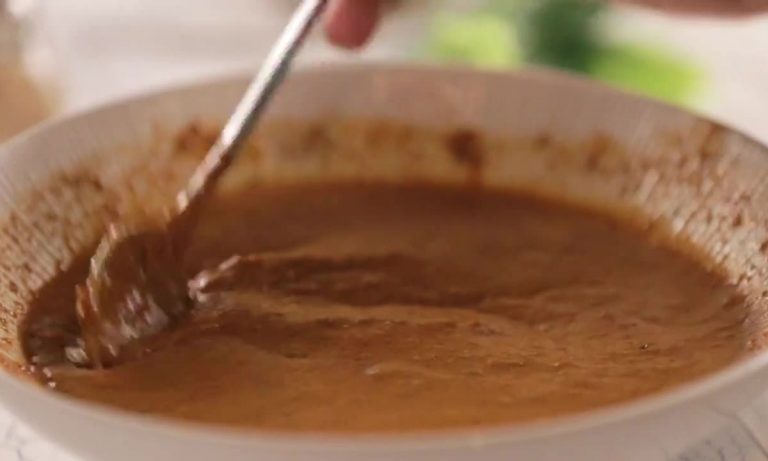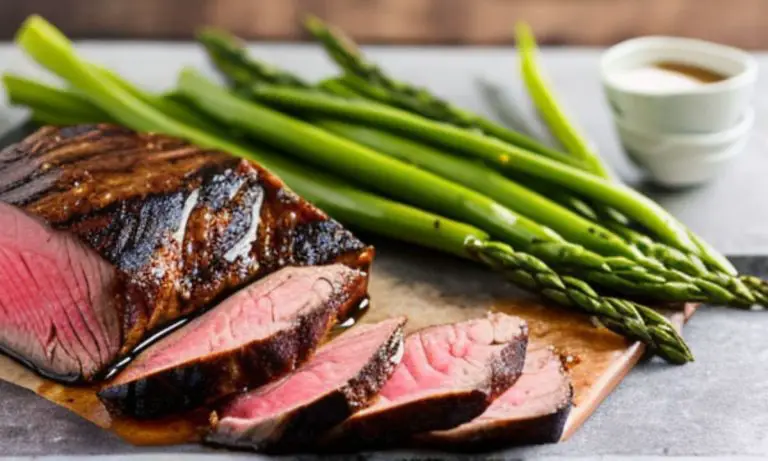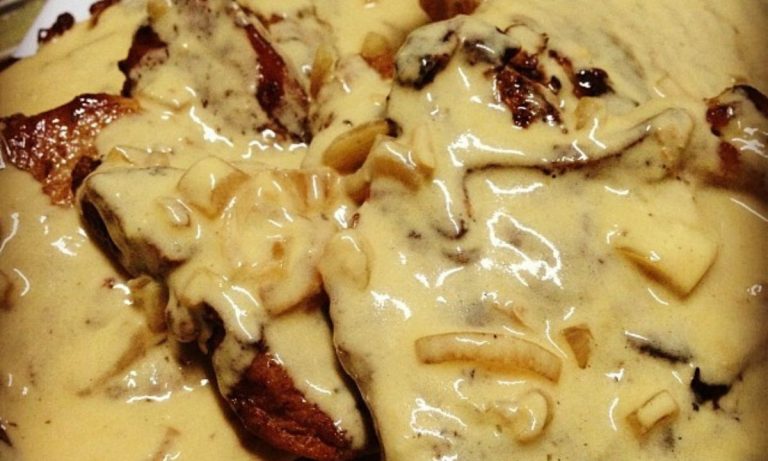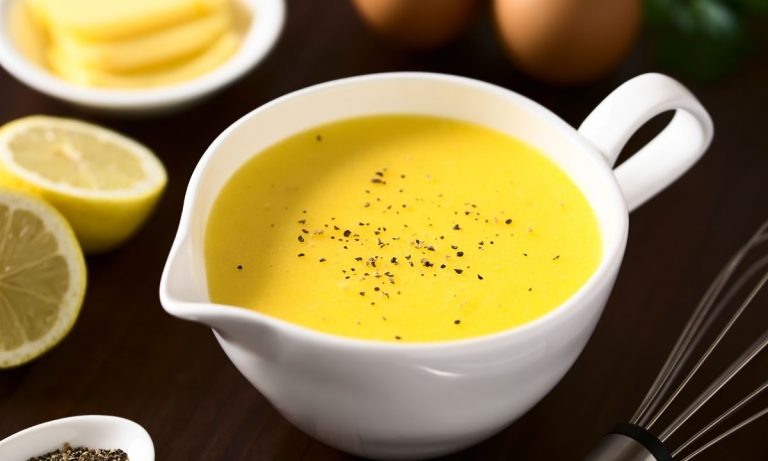Gochujang Sauce Recipe- Korean Chili Paste
Korean chile paste gochujang recipe contains red chili powder, glutinous rice, fermented soybeans, and salt. Bibimbap, tteokbokki, and bulgogi use it because of its rich, sweet, and spicy taste.
Many Korean supermarkets and foreign food stores sell gochujang as a dipping sauce or marinade.
How to Make Gochujang
From kimchi to bulgogi, Korean dishes are known for their unique blend of savory, spicy, and sweet flavors that tickle your taste buds and leave you wanting more.
And one of the most essential ingredients in Korean cooking is gochujang – a versatile chili paste that adds depth and complexity to any dish it’s used in.
In this blog post, I’m going to share with you my recipe for making gochujang from scratch. I’ll walk you through the ingredients, and step-by-step instructions, and answer some common questions about this beloved Korean ingredient. So, let’s get started!
Gochujang Sauce Ingredients
To make gochujang, you’ll need the following ingredients:
- 2 cups Korean red chili powder (gochugaru)
- 1 1/2 cups glutinous rice powder
- 1 cup fermented soybean powder (mejugaru)
- 1/2 cup coarse sea salt
- 1/4 cup sugar
- 2 cups water
- 1 cup malt syrup (yeotgireum) or honey
- 1 cup Korean rice wine (makgeolli)
Step by Step Instructions to Make Gochujang
Step 1: Soak the glutinous rice powder
The first step in making gochujang is to soak the glutinous rice powder in water overnight. This will soften the rice and make it easier to blend into a smooth paste.
Step 2: Make the rice paste
Once the glutinous rice powder has soaked overnight, drain any excess water and transfer the rice to a blender or food processor. Add 1 cup of water and blend until you have a smooth, thick paste. Set the rice paste aside for later.
Step 3: Combine the ingredients
In a large mixing bowl, combine the Korean red chili powder, fermented soybean powder, coarse sea salt, and sugar. Mix well until all the ingredients are evenly distributed.
Step 4: Boil the water and rice wine
In a large pot, bring 2 cups of water and 1 cup of Korean rice wine to a boil. Reduce the heat to low and add the malt syrup or honey. Stir until the malt syrup or honey has dissolved.
Step 5: Mix the ingredients
Add the rice paste to the pot of water and rice wine. Stir well until the rice paste has dissolved and the mixture is smooth. Gradually add the dry ingredients mixture to the pot, stirring constantly until everything is well combined.
Step 6: Ferment the gochujang
Transfer the mixture to a large glass jar or ceramic crock. Cover the jar or crock with a cheesecloth or lid that allows air to circulate.
Leave the jar or crock at room temperature for at least a week or up to a month to ferment. Stir the gochujang every couple of days to prevent mold from forming on the surface.
Variations and Substitutes of Gochujang (Korean Chili Paste)
- Sriracha: Although not Korean, sriracha can compensate for gochujang. Its similar spiciness can give your meal a bold and tangy taste.
- Chili garlic sauce: Ground chili chilies and garlic make this sauce spicy. Though thinner than gochujang, it tastes similar.
- Red pepper flakes: If you don’t have any of the above, use red pepper flakes to spice your meal. It won’t taste as rich as gochujang or its equivalents.
Gochujang varies in spice, sweetness, and saltiness. Gochujang with fruit puree or vinegar adds taste. Choose from mild, medium, or hot gochujang to fit your taste.
How to Use Gochujang Sauce in Cooking
Gochujang, soy sauce, garlic, ginger, and sugar form a delicious marinade for poultry, beef, or pork. Grill or pan-fry the beef after marinating for an hour.
Stir-fries: Add a teaspoon of gochujang for spice. It goes well with cabbage, onions, and zucchini.
Sundubu jjigae (soft tofu stew) and kimchi jjigae (kimchi stew) use gochujang. (kimchi stew). It spices the soup.

Gochujang, soy sauce, rice vinegar, and sesame oil form a tangy dipping sauce for dumplings or vegetables.
For spicy fried rice, add a teaspoon of gochujang.
Bibimbap: Gochujang is a common seasoning in Korean rice bowls. Mix gochujang, soy sauce, and sesame oil and drizzle over the rice dish.
Gochujang makes a tasty and fiery sandwich spread.
Storing Homemade Gochujang
Proper storage preserves gochujang’s vitality. Gochujang should be refrigerated to avoid spoilage. After opening, store gochujang in a glass jar or plastic container with a firm lid.
This prevents air from drying or moldy gochujang. Store gochujang in a cool, dark spot like the back of your refrigerator or pantry to avoid direct sunlight and heat. Even though gochujang can last a year in the fridge, check the expiry date.
What is the difference between gochujang and sriracha sauce?
While both gochujang and sriracha sauce is spicy condiments, they have different origins and flavor profiles.
Gochujang is a Korean chili paste that is made from fermented soybeans, glutinous rice, and red chili powder.
It has a complex, savory, and slightly sweet flavor, and is often used as a base for marinades and sauces in Korean cuisine.
Sriracha sauce, on the other hand, is a Thai hot sauce made from chili peppers, garlic, vinegar, and sugar.
It has a more tangy and sweet flavor and is often used as a condiment for dishes such as pho and banh mi.
Can I make gochujang without using fermented soybean powder?
Yes, you can substitute the fermented soybean powder with miso paste or soy sauce. However, keep in mind that this may change the flavor profile of the gochujang and make it less authentic.
How spicy is gochujang?
The spiciness of gochujang can vary depending on the type of red chili powder used and how much is added.
Generally, Korean red chili powder is medium-hot, so gochujang has a moderate level of spiciness. However, you can adjust the heat level by adding more or less chili powder.
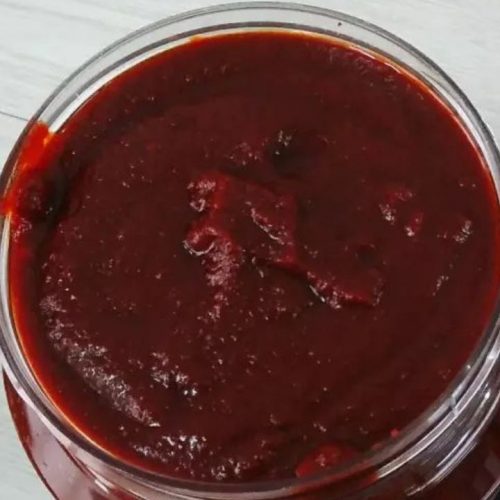
Amazing Gochujang Recipe
Ingredients
- 2 cups Korean red chili powder gochugaru
- 1 1/2 cups glutinous rice powder
- 1 cup fermented soybean powder mejugaru
- 1/2 cup coarse sea salt
- 1/4 cup sugar
- 2 cups water
- 1 cup malt syrup yeotgireum or honey
- 1 cup Korean rice wine makgeolli
Instructions
- The first step in making gochujang is to soak the glutinous rice powder in water overnight. This will soften the rice and make it easier to blend into a smooth paste.
- Once the glutinous rice powder has soaked overnight, drain any excess water and transfer the rice to a blender or food processor. Add 1 cup of water and blend until you have a smooth, thick paste. Set the rice paste aside for later.
- In a large mixing bowl, combine the Korean red chili powder, fermented soybean powder, coarse sea salt, and sugar. Mix well until all the ingredients are evenly distributed.
- In a large pot, bring 2 cups of water and 1 cup of Korean rice wine to a boil. Reduce the heat to low and add the malt syrup or honey. Stir until the malt syrup or honey has dissolved.
- Add the rice paste to the pot of water and rice wine. Stir well until the rice paste has dissolved and the mixture is smooth. Gradually add the dry ingredients mixture to the pot, stirring constantly until everything is well combined.
- Transfer the mixture to a large glass jar or ceramic crock. Cover the jar or crock with a cheesecloth or lid that allows air to circulate.
- Leave the jar or crock at room temperature for at least a week or up to a month to ferment. Stir the gochujang every couple of days to prevent mold from forming on the surface.
Notes
- If you can’t find some of these ingredients, you can substitute them with other options. For example, you can use regular rice flour instead of glutinous rice powder, and miso paste instead of fermented soybean powder.

